Electromaker Meet a Maker Podcast Episode 6: Matt Farley
Welcome to the Electromaker Meet a Maker podcast, episode 6! Senior Editor Moe Long chats with coder, blockchain tinkerer, and home automation wizard Matt Farley. Matt and Moe talk smart home control and automation, how businesses should use blockchain, and more!
Electromaker: That world's smartest home with blockchain is something that I really want to dig into because there's just a ton going on with it. So how did you envision that project?
Matt: Yeah, good question. So from the, from the non-technical, from the parenting side, obviously, you know, you can see in today's world, kids are stuck on iPads are stuck on media, their focus isn't what it used to be. And so we...wanted to have our kids to have some responsibility, some accountability, and not just allow them to use Xbox all day or play on iPads all day.
So we kind of invented this system of, in our minds, of kind of these fictitious points, you have to earn points at the same time. We also wanted them to do chores and be responsible. So let's have them do chores to earn points and be responsible.
And around that same time, blockchain was, you know taking off in the industry and at work as an IT manager I'm sitting in meetings all day talking about "well what does blockchain mean [for business]? How are we going to leverage blockchain in our business?" And I'm just kind of upset that I have to sit in management meetings that I can't go play with blockchain. So I'm sitting there thinking like, okay, I need to be able to play with Ethereum and blockchain want to figure these things out. I want to write my own cryptocurrency. That was the marriage of those two things like okay, I can scratch this itch by creating a cryptocurrency for my kids that will act as their tokens. And I can learn about blockchain, learn about Ethereum, and I get to write code and deploy it...so it was educational for me. It's facilitated our kids, hopefully being responsible and accountable at home and then it also armed me with knowledge. So when I'm at the office, in those meetings about blockchain, I really understand the technology.
Electromaker: And it seemed like there was probably a lot of complexity to that project. Since there were all these moving parts. So do you recall any challenges that you encountered while working on that?
Matt: So yeah, the moving parts. You know, if you watched all 12 videos of the world's smartest home, it really doesn't come through what's happening behind the scenes is a lot of those use cases. There's so many different moving parts that have been built upon each other to integrate together.
It was actually all of the pieces had been in place through other use cases. And I just had to come in and add a thin layer to glue it all together to make the magic happen.
So with the blockchain one, there wasn't a lot of that in place, and blockchain was new. And so one of the biggest challenges was actually learning how to properly leverage the Ethereum language, it's called solidity and if you look at the syntax of solidity, it looks like c++, it looks a little bit like Java and you think like, "Okay, I know c++, I know Java," I can go in there and just kind of do what I normally do in my development, object-oriented programming, but solidity, it doesn't run on a computer. It runs on a network of Etgereum and its characteristics are just are very different.
So maybe a poor analogy would be like, oh, I've, I've taken care of mammals with two eyes and two arms and two legs. And then like a dog is different from a human. They're both mammals. But man, they're just different beasts. So this solidity was such a different beast in that you write a few lines of code that should do something very simple in c++ and in solidity, it just flat out doesn't work that way, or it doesn't perform the way you think it should.
So getting over those hurdles, and even then, once you've written the code, the act of getting the code deployed on a blockchain is just new and different. And it seems a lot more cumbersome than it should be. And I think a lot of that is just that all of this technology is brand new. So the toolset around it to make it more simple. It's not quite there. So yeah, just the learning curve on all of that and making it work.
Electromaker: I actually wasn't too familiar with solidity. So I just looked it up while you were talking about it off to like research a lot more. That's kind of cool.
Matt: Yeah, yeah, it is. It's powerful. If you think about the concept of instead of code executing on a CPU, a server, your code actually lives on a network and it uses the resources of the network to power the business logic. It's kind of interesting.
Moe: Absolutely. And so you use blockchain for Jarvis Farley. And you mentioned also kind of using it for work. Can you talk a little bit about how you view the cryptocurrency and blockchain space because I know there are a lot of differing opinions on that.
Matt: I'm by no means an expert, but I guess my personal perspective, especially coming from the office a big corporation...where I can tell you day in day out there are high paid consultants...telling them "Oh, you need to use blockchain, it's the latest and greatest." And there are very senior...vice presidents that are feeling like we're missing the boat if we're not using blockchain. So everybody's talking about how are we going to use blockchain.
But I think the reality is that one, it's just a very nascent technology. It's in the womb. And I don't think anybody knows what this baby's going to look like when it grows up. Everybody's excited. We figured out how to procreate, but nobody knows what babies are going to look like when they grow up. Nobody has really found any simple, meaningful use cases.
But I'd say the one area that does stand out is workflows are use cases that require trust between multiple different parties. And one analogy I like to use is oil and gas, for example, is the intersection of Internet of Things, IoT, and blockchain. On the blockchain piece, it's all about the smart contracts. So smart contracts is just another way of saying your code, your business logic that executes on the blockchain.
And so if we talked about the current state of a workflow might be how we ship oil or petroleum chemicals. So let's imagine we have an oil tanker in the Gulf of Mexico and that oil is being shipped from Mexico to Africa. We might have a contract with the shipper that according to contracts, you need to keep this oil under 80 degrees Fahrenheit and you can't have this much vibration, you can't have this much humidity, these are all the terms and conditions. If you're late because of weather, here's a penalty, if you're late because of sickness there's a penalty, if your boat breaks down here's a penalty, so you might have 50 terms and conditions in your contract as to how much we're going to pay that person to ship our oil.
So if right now maybe we need middlemen we need lawyers and we argue with them about why they were late or why the oil got too hot or vibrated too much, we think it vibrated too much. They don't think it did.
Imagine a scenario in the new world where we and everybody involved, we've all agreed to certain sets of the business logic of smart contracts that live on a blockchain. And then the boat itself is instrumented with IoT sensors. And those sensors actually physically sense the temperature, the humidity, the vibration, and then we all agree that weather.com or something is going to be our source of truth for weather.
And so the code on the blockchain would look at all of those variables that would get the sensor data, get the weather data, and then the blockchain would be the middleman for the money transaction. If that oil makes it there on time, without any penalties, the blockchain transaction, the financial transaction between us and the third party there's no arguing there's no looking at data there's there's no back and forth it's just seamless because that smart contract did it and then the money uses a blockchain to transfer, so I think things like that can be really game-changing.
So supply chain, but what it takes is multiple companies getting together and agreeing on a set of standards to use the same network, the same technology. And so Deloitte calls this a consortium model. You have to create a consortium to do this. So that's in the business sector. I think on the personal side, things like Bitcoin, you know, people using cryptocurrency to buy things personally, I do think that X number of years from now a lot of countries will be using financial systems that are somehow on a blockchain or some type of form of cryptocurrency but I really have no idea how many years out we are and if it's going to be Bitcoin, Litecoin, whatever coin what kind of I just fundamentally I think that the technology will infiltrate the financial sector and you know, 30 years from now Bank of America is going to be using some type of blockchain but to transact
Electromaker: From my limited research on crypto. I agree with you on that. So one thing I also want to dig into, which I mentioned earlier, is kind of what I was talking about of balancing day job and maker project. So how are you able to accomplish that?
Matt: A lot of people ask that they looked at those videos, and then they look at me, they're like, okay, either you have no life, or you can ask your family, like, how have you possibly been able to do that? Because a lot of people have hobbies and whatnot. So I would say for me, several factors are, I think one of the biggest things is what you are seeing is kind of the culmination of many, many years of bits and pieces being built. So you're seeing the pyramids, but you know, for years I've been doing building blocks here and there, you know that server Jarvis I didn't call them Jarvis, but I've had a home server for 15 years, and for the past 15 years on that home server I've been writing little bits and pieces of code but do things for me, that automate things for me, so it's just been building on top of that for platform for many years. Where it really exponentially took off was when the Echo came out, when I realized, oh my gosh, I can now talk to my computer instead of you know manually triggering things. The other thing is like I said with Chevron [having] every other Friday off that at least gave me a day a couple days a month where I could try to sit down and focus in and do some and write some code.
And then the other thing is the only thing I really watch on TV is NBA and so if the if the NBA is not on TV, I'm not I'm not binge-watching on Netflix. I'm not, you know channel surfing, I'm going to be at my desk and I'll probably you know try to work on some code or do something. But I do have a life. I'm a very active basketball player. I go to the gym four times a week. So there's that and then the kids, the kids' factor. I mean we when we lived in the US we homeschooled so they were always home when I was home.
Yeah, so like on the every other Friday off, they're doing school work. I'm working on that. But yeah, that's my rambling answer of how I managed to do that.
Electromaker: That's a great answer.
Matt: But it plays into it plays into the other...question that I get from people is and this is probably actually the first thing they ask which is "Matt why in the world do you not sell this" and people like parents look at me and they're like where take my money, please. And so this goes back to the first question which is when you, when you're building software and writing code to just to get it working just to get it working in its bare format, is probably 20% of the work and the other 80% of the work is making it work all of the time. 100% reliable, bulletproof. It works on my machine, your machine. It works in China works in Japan, it works with no matter what kind of hardware you throw on it.
So as I'm building out Jarvis to control our TV, it's very simple for me to get it to work. Just with my TV. It's probably 10 times as much work to get it to work with everybody's TV. So if I wanted to make this thing, commercial and reliable, I would have to quit my job, I would need a team of three. And we would have to sit in a room and just bang on this thing for probably six to 12 months before we had something we could sell to other people and they could put in their house and to do that I would have to quit my job and kind of bet the farm, bet my family's livelihood that I'm going to, you know, change careers. And like I talked about earlier with, with my family, I'm not risk of I am risk averse. I'm not the type of guy to say, Honey, I'm going to make us rich. I'll quit my job and do this. It was more like hey. I do this for fun. And yeah, it's really awesome.
If it ever makes money somehow, if somebody comes to me and says, you know, Matt, we would like to buy all of your intellectual property. We know it's not a product, just, we want to buy your code, and we'll go make the product. You know, I would be jumping for joy on that kind of thing. But yeah, so I don't have time to make it reliable, robust, and scalable for everybody.
Electromaker: And presumably, you have more of a work-life balance working for someone else as opposed to like having your own company. Because I know even when, like something simple goes wrong. Like I gave my parents access to my server, and we would they text me and they're like, Plex isn't working. I'm like, Oh, no. They like this isn't like Netflix, guys. Well, it is but it isn't. So out of curiosity, what's your favorite NBA team? And what position Are you usually when you play basketball?
Matt: I've played since I was 11 or 12, and I'm 6'3" two hundred and 30 pounds. So I've always been the big guy on the court. So in high school I played center and in the Philippines, I'm always the big guy on the court, and I usually play center but for fun I do try to advance my guard skills and dribble and shoot and whatnot. It was kind of fun these the before we moved back to the Philippines in 2015, 16, 17 in Texas I was playing with a group of friends who were actually very good basketball players, and most of them were taller than me. And so then I could be more of a guard and then actually kind of dribble more even on that good.
Anyway for my favorite NBA team, growing up that when the Sacramento Kings had Lottie Divas, Chris Webber, Mike Bibby, and they kind of made a run to the championship, I was a diehard Kings fan as a team, but ever since then when they when they went downhill I've been more of a fan of players. So I'm a fan of whoever Russell Westbrook is playing for, whoever LeBron James is playing for whoever, Giannis Antetokounmpo is playing for, I like those guys and I root for their teams but I don't have an attachment to a team. What about you?
Electromaker: That's kind of how I am as well with NBA, with college basketball I have a team, the Tar Heels I went to UNC, so they're my team and then with American football I have a team the Eagles. And then with soccer. I like arsenal.
Matt: Speaking of the Eagles, in Texas, the guy across the street from us was an Eagles player and we didn't live in a rich neighborhood. Everybody's like "why is there a Philadelphia Eagles guy living in our neighborhood?" and we got to know him when he moved in and it's because his parents and his wife's parents are from the area, and they want...eventually when they have kids [for] their kids to be around grandparents and family, and also he was a rookie, he was on a rookie contract, you don't buy a mansion usually on a rookie contract. but he is kind of cool you may know and his name is and I can remember that but he's...maybe a defensive end or something. I think he goes by Big V. He's got one of those really long Tongan names, but he's like a 6' 8" lineman but he does start. Nice guy. Super nice guy down to earth, in the NFL. And then he's got a Super Bowl ring.
Did you play basketball by change?
Electromaker: I did. And I'm making this call for my co-working space. A couple of my friends here we go play pick up some, but I'm not like on a team still or anything. Yeah, I just played like, in like, all through high school. And then since I went to UNC I was obviously not on the basketball team there. I just did intramurals. I was on a couple of those teams. I just like it because it's fun. And it's kind of an engaging way to get some cardio as well. Because you're doing something. It's a lot of fun.
So how do you decide what projects to work on and what do you have that you're working on next?
Matt: It almost goes back to when I worked for the county. And it was like whatever I feel like. You know, some days, I walked in the door and felt like database. Other days, I walked in and felt like telecom. So that's the cool thing about this being a hobby and not something I forced upon myself to try to make a living or anything it's, you know, when I have time to sit down at the computer, what do I feel like working on. Do I feel like working on something with my media automation or the lights or what, but what I try to do is go through life and ideas pop into my head of this would be a cool thing to automate, I add it to the list. So I always have a very long to-do list. And then it's just when I sit down, I look at the list and I say, okay, what stands out today that will fit in how much every time I have. And I have the itch to work on that type of thing right now. It's very, very freeform.
The things that now I'm interested in doing would be modules related to artificial intelligence, partly because that's what I was getting into in my last job. And I think there's some fun stuff to be done there. And so when I first did the world's smartest home videos, I think there were 11. And then right before we moved to the Philippines, I added number 12. And number 12 was the artificial intelligence module. So I don't know if you've seen number 12. Where it asks if the room messy or clean. And then they take a photo with a camera and artificial intelligence labels your photo for you.
So that kind of stuff I think is fun and interesting and cool. And so the one I've been thinking about is one of the artificial intelligence services that all of the big vendors are coming out with is a service that you feed it a video like, for example. You take that video and you give it to the AI service and the AI service will go through and transcribe everything Matt said everything most said with timestamps on what we said. And then it will categorize the sentiment of what we said like if it was a positive sentiment or negative sentiment, and then that could all be in a searchable index database. And then it can even identify things in the video. So it's in the video, if I had a cat jump on my lap, it would identify, oh, there's a black cat on Matt's lap. And so within the service, once you have done the artificial intelligence analysis and it's in some kind of library, you could just go say, "Hey, you know, search for black cat," and it would show you at timestamp 5:46. There was a black cat type of thing.
So what I've been thinking about a lot, again, from a family use case perspective is journaling. We believe that journaling is a healthy thing to do. It's good for your posterity, but we never do it because we never had we never force ourselves to sit down and write either pencil and paper, or even on the keyboard. And I really want my kids to keep a journal. And I need to keep one for grandkids and great grandkids. So thinking about this technology that's available now, I want to have a Jarvis module that's like, did you watch "Star Trek The Next Generation?"
Electromaker: Oh, yes.
Matt: Yeah, me too. I love that show. And thinking back to the Captain's log, you know, they have Captain's log of, you know, Captain Picard and all of his log entries. So I'm thinking of a Captain's log module where I can just like go up to any computer in the house that has a built-in webcam and say, "hey Jarvis, I want to do you know, Matt's Captain's log for the day," or something. And so Jarvis would have the computer immediately start videotaping my journal entry. And I would just talk to it like I'm talking to you talk about what happened today. What's going on, what makes me happy and sad.
And then Jarvis would take that video and send it to one of these AI cognitive services that would do all of the metadata, the indexing, what was said, what was positive, what was negative. And so if our whole family is doing that, we would build up this library of archives of maths Captain logs, my wife's Captain logs, my daughter's Captain blog. And then as she gets older and throughout life she could have that database available. And we could have graphs and charts that could show like the sentiment of her journal entries over time. Like if she could look back and say, "Yeah, my freshman year in high school was really hard for me. I thought through depression," we would see on the logs,the graph of her sentiment analysis on her videos going down and then going up and then she could click on that and zoom in and watch those videos from her life. So it's a way of kind of capturing their life but using the artificial intelligence cognitive services that are available now to really make it interactive and useful as opposed to just saving a video on a drive somewhere.
Electromaker: I like that idea a lot. That's super cool.
Matt: Yeah, yeah. Thanks. I so you can see this is our living room. We actually don't have anything yet because our furniture is not here yet. We've moved overseas five times. And so every time what happens is you pack up your house, they put it in a shipping container. And it takes about two months, two to three months to get to your destination. So all of our furniture and my computers are in Jarvis, they're in a shipping container in the middle of the Pacific right now. And hopefully at the end of the month, they arrive in the Philippines and then they bring it to our house and unpack it so I can't work on I haven't been able to work on anything for two months now and I have one more month ago but once it's here, instead of I can I can build the world's smartest apartment here where we're at and then start working on the new modules.
Electromaker: Are you going to document setting the apartment back up it?
Matt: Probably not. Because it's it's not going to be as cool as the house was. Because we'd been based in Texas for 12 years and when Chevron sent us to Scotland, we kept our house we came back to the house Chevron sent us to the Philippines, we kept the house, came back to the house.
So we came back in 2015 we were like, "Okay, it's time to build our second house," and we actually thought it was going to be our dream house because we thought I thought I would stay with Chevron forever. I didn't know the Philippines is going to lure me back so we built that house you saw on the video, that was our dream home. We had just built it, and during construction, because I knew I wanted to do home automation I was telling the builder "yeah put electrical outlets in the attic above our ceiling in there in the rafters of the attic," I want electrical outlets and I want cables run here all over the place...I [wanted] to have [Amazon] Echoes recessed in the ceiling and they need to plug into the attic. I'm was going to have cameras attached in the ceiling.
They would be plugged in through the attics and so we built that house with all of my use cases in mind, like the TVs would be on the wall, and they would have 50 foot HDMI cables funneled up through the attic into the closet. And so that was part of the cool factor of Jarvis was just the user interface was sexy, so to speak, because you had flat panel TVs in the wall and you had recessed Echoes in every room, no matter where you are in the house, you could speak and it would hear you. So all of that from a hardware perspective, it's not going to be nearly as exciting in this condominium because we're on the 27th floor of a 40 story building. So we have a great view of downtown Manila, but I don't have liberty to put things in the ceiling and drill into the walls and do the hardware like I did before. So instead of a wall-mounted TV, it's going to be a TV on a piece of furniture and instead of a camera in the ceiling with wires going through the attic, it's going to be like a camera on a shelf plugged in on the floor where you can see the wire and it won't be nearly as sexy and some of the use cases won't be able to do here if the hardware isn't here.
So the biggest example, I can take them to the alarm system, our house had the alarm system that I could interface with this condominium doesn't have any alarm system. So any alarm system related thing, that won't work. So I'm going to implement probably 80% of what I had in the house, but it won't be nearly as sexy. But then I'll continue to add the models like the Captain's log type of thing.
Electromaker: Yeah, that's the that's the difficult part about apartment life. There's some things I like about it. I don't have to rake the yard or cut the grass. But then when I'm installing new electronics, I'm like, "Well, I could if I had my own place, run these [cables] through the walls," but for now I'm just tacking this HDMI cable all the way around the room. So people watch your videos, but who do you watch? What makers are you keeping up with?
Matt: I'm not a big YouTuber. So it's, I get most of mine through blogs. So, like, some of the things I subscribe to the email, the email stuff is like Hackster.io. I look at their emails and then I subscribed to a lot of technical blogs. Some of the things are of course the big ones like Ars Technica, Amazon's Alexa developer blogs, Android Developer blogs. This one's called handpicked stories on technology from Medium. There's a home automation blog, Maker Musings, Raspberry Pi blog, Engadget, Lifehacker.
Thanks Matt! Keep on making. Who do YOU want us to feature on the Electromaker Meet a Maker podcast?




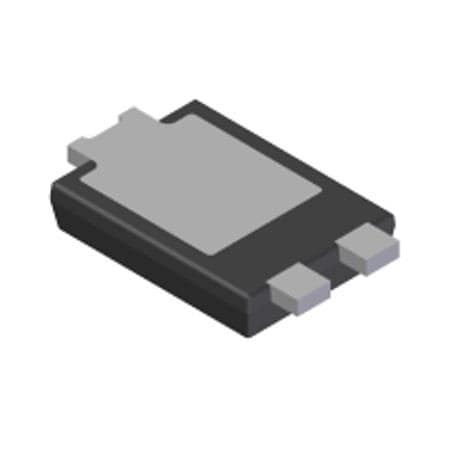
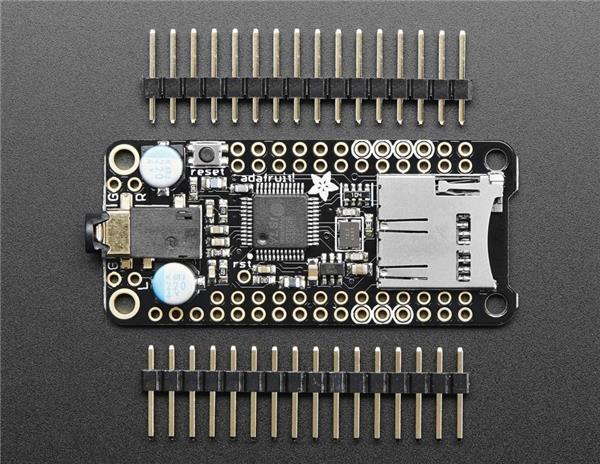
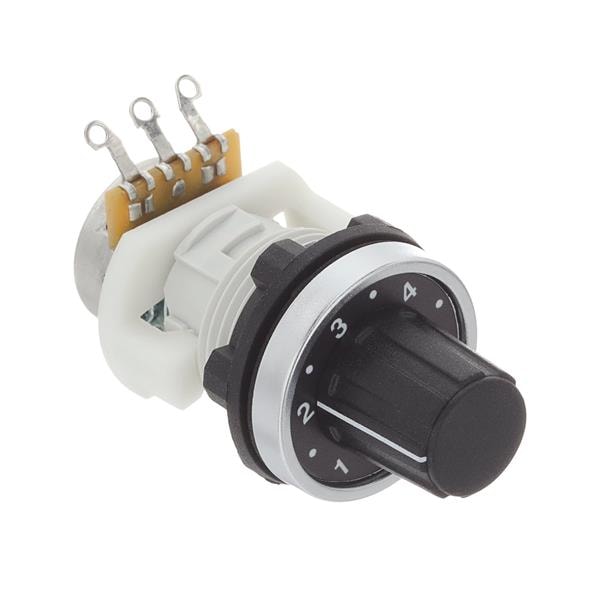
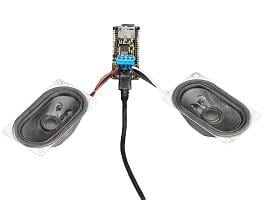
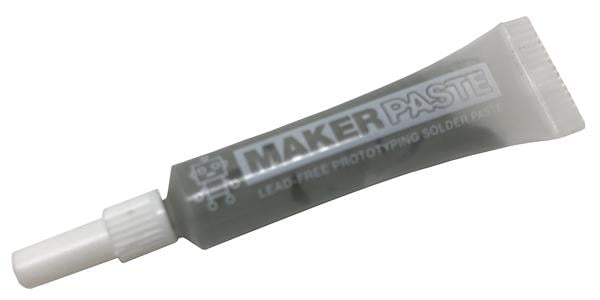





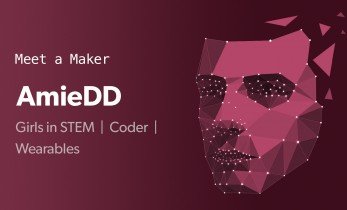
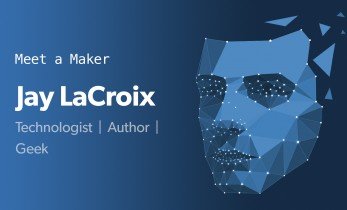
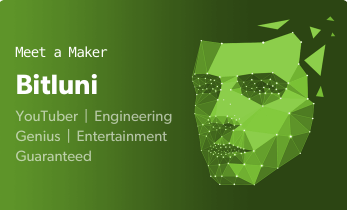
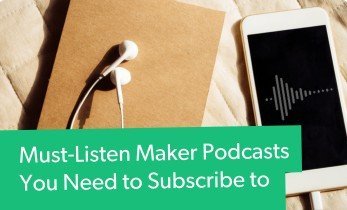
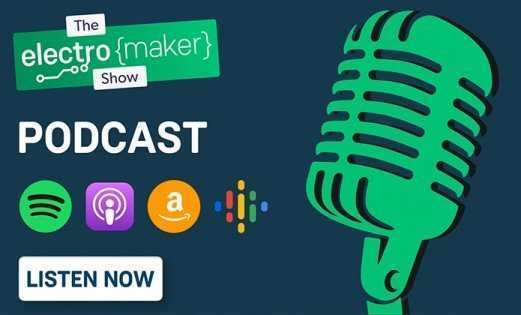

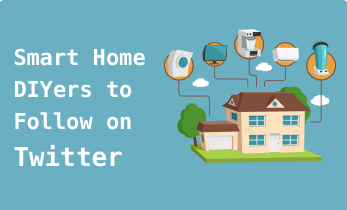
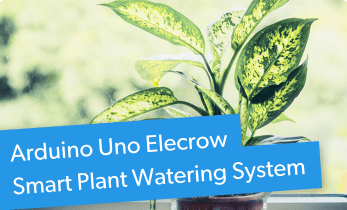
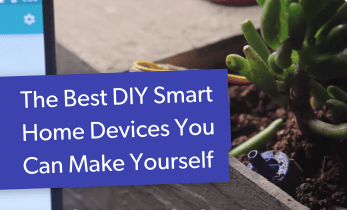
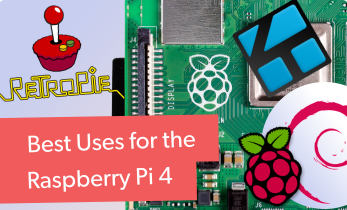
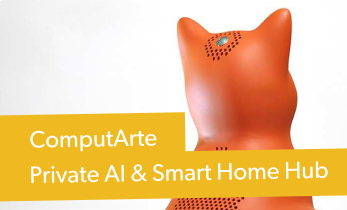
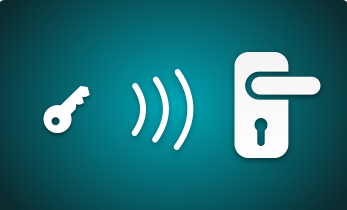
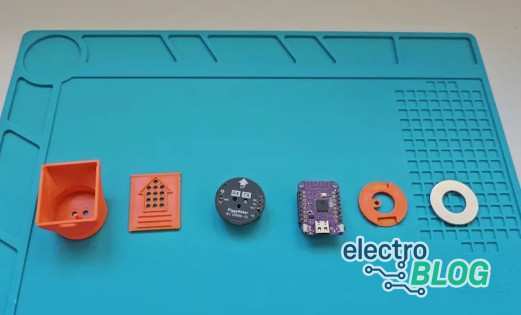

Leave your feedback...